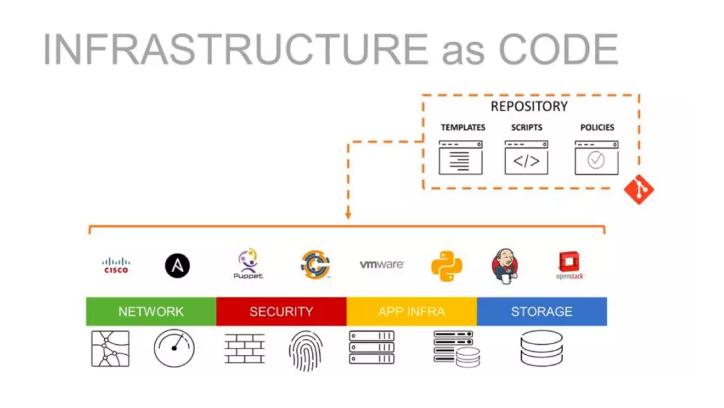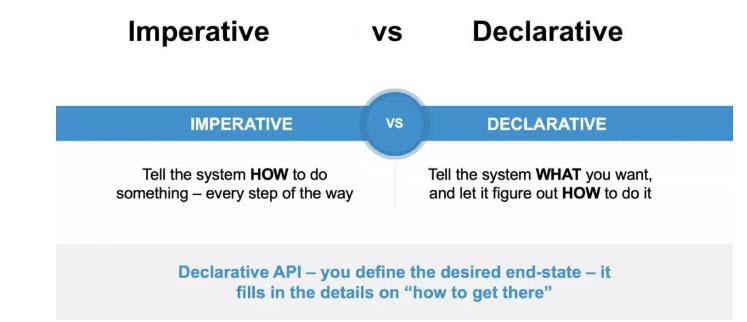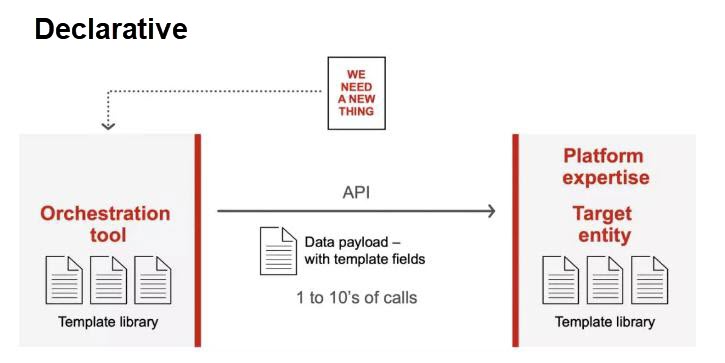Development has emerged in the Internet era. Operations evolve along with the high concurrency of uses, and user experience has become Dev + Operations = DevOps. In the IT industry, people that study innovation will always meet each other to discuss DevOps trends, such as agility, continuity, stability, and delivery. This article explains what IaC is, how it's implemented, and its relationship with the DevOps of F5.
Infrastructure as Code (IaC) uses a descriptive way to manage infrastructure, including networks, virtual machines, storage, and load balancing. The IaC model generates the same environment every time it is applied, which is a key time for integration with DevOps. It is used in conjunction with Continuous Delivery.

The development of IaC has solved the problem of environment drift in the CD pipeline. Without IaC, the team must maintain the settings for each environment. Over time, each environment becomes a separate information island and cannot replicate the same configuration automatically. Inconsistency between environments can cause problems during deployment, eventually leading to recording difficulties of infrastructure management. Thus, infrastructure can only be maintained manually separately.

IaC is a key attribute to implement best practices in DevOps. Developers can be more involved in defining configurations. DevOps teams participate in the early stage of the development process. They can improve the visibility of server status and configurations and ultimately provide visibility to users in the enterprise using IaC tools. They aim to bring teams together and maximize their roles. Automation is usually designed to solve the confusion and error-prone problems in manual processes and make them more efficient. The processes become flexible, downtime duration becomes shorter, and companies are provided with an overall cost-effective way by allowing the creation of better software and applications. IaC aims to reduce the complexity of manual configuration. Automation and collaboration are considered the core points of DevOps, and infrastructure automation tools are usually an important part of the DevOps toolchain.
Idempotence is an important principle. It ensures that the final states of environments are consistent, regardless of the initial states of environments and the execution times of the deployment command. Therefore, teams make changes to the environment description and give versions to the configuration model through IaC, usually adopting standardized and easy-to-understand code formats (such as JSON and YAML.) The continuous delivery pipeline configures the target environment through IaC. If the team needs to make changes, they will edit the source instead of the target.
The team implementing IaC can provide a stable environment quickly and on a large scale. The team uses code to represent the final desired state of the environment, thus avoiding manual configuration of the environment and enforcing consistency. Infrastructure deployments based on IaC are repeatable, preventing runtime problems caused by configuration bias or lack of dependency.
DevOps teams can use unified practices and tools to deliver applications and supported infrastructure quickly, reliably, and on a large scale.

The feature of imperative way is clear. If you want to achieve the ultimate goal, you need to execute specific commands in the appropriate order. For example, if the order is 123, it cannot be changed to 321. For each operation, you need to call the corresponding API or specify the location of commands.

The declarative way is very simple. You only need to describe the final state of the environment you need and then post the description through a small number of API tasks. By doing so, the final environment can generate the final state based on the description. So, it is very popular with developers.

F5 has four declarative components to match every stage in the continuous delivery pipeline: deployment, release, configuration, and monitoring.

Disclaimer: The views expressed herein are for reference only and don't necessarily represent the official views of Alibaba Cloud.

1,129 posts | 346 followers
FollowLee Li - January 11, 2021
Alibaba Clouder - August 12, 2021
Alibaba Clouder - September 1, 2020
Alibaba Clouder - December 23, 2020
Alibaba Cloud Community - September 15, 2021
Alibaba Cloud Serverless - August 23, 2022

1,129 posts | 346 followers
Follow Alibaba Cloud Flow
Alibaba Cloud Flow
An enterprise-level continuous delivery tool.
Learn More Robotic Process Automation (RPA)
Robotic Process Automation (RPA)
Robotic Process Automation (RPA) allows you to automate repetitive tasks and integrate business rules and decisions into processes.
Learn More DevOps Solution
DevOps Solution
Accelerate software development and delivery by integrating DevOps with the cloud
Learn More Function Compute
Function Compute
Alibaba Cloud Function Compute is a fully-managed event-driven compute service. It allows you to focus on writing and uploading code without the need to manage infrastructure such as servers.
Learn MoreMore Posts by Alibaba Cloud Community
Start building with 50+ products and up to 12 months usage for Elastic Compute Service
Get Started for Free Get Started for Free